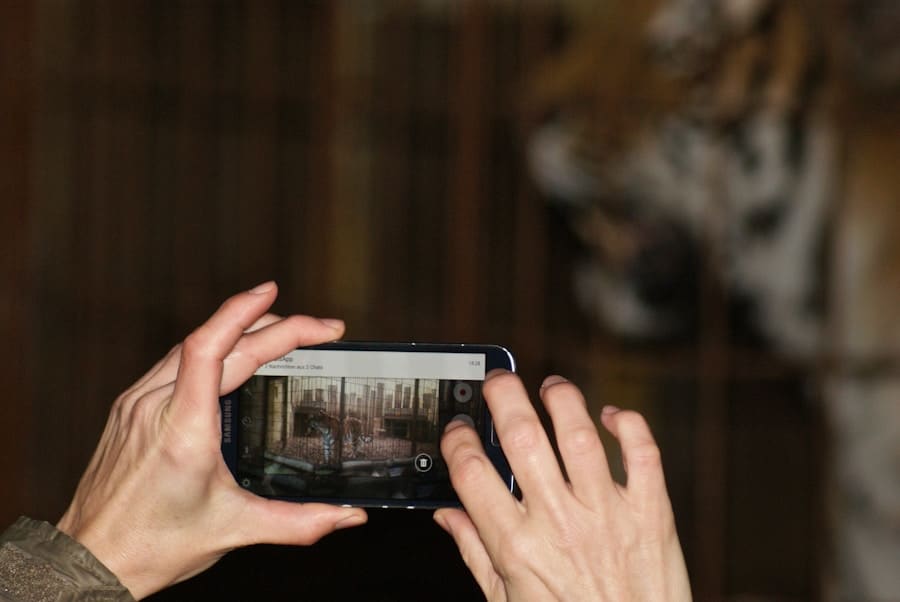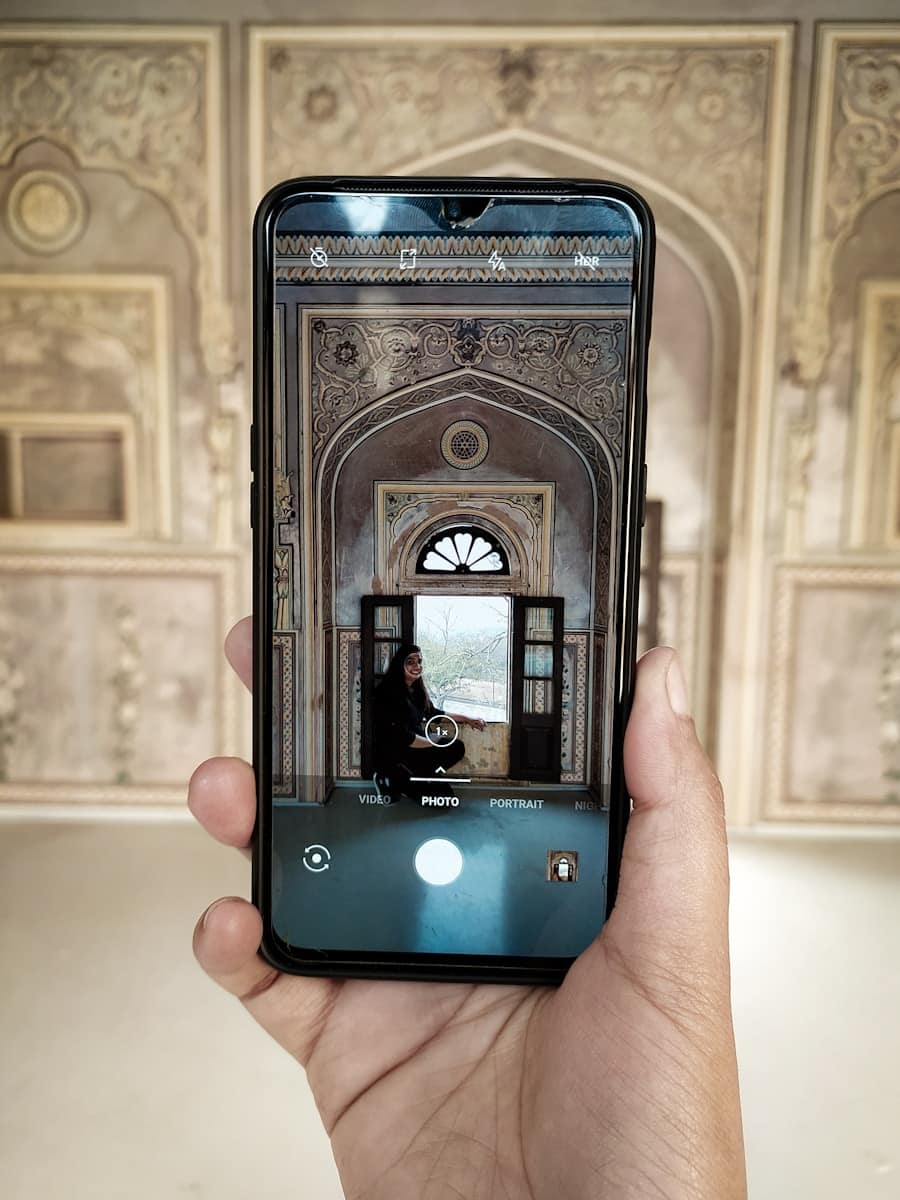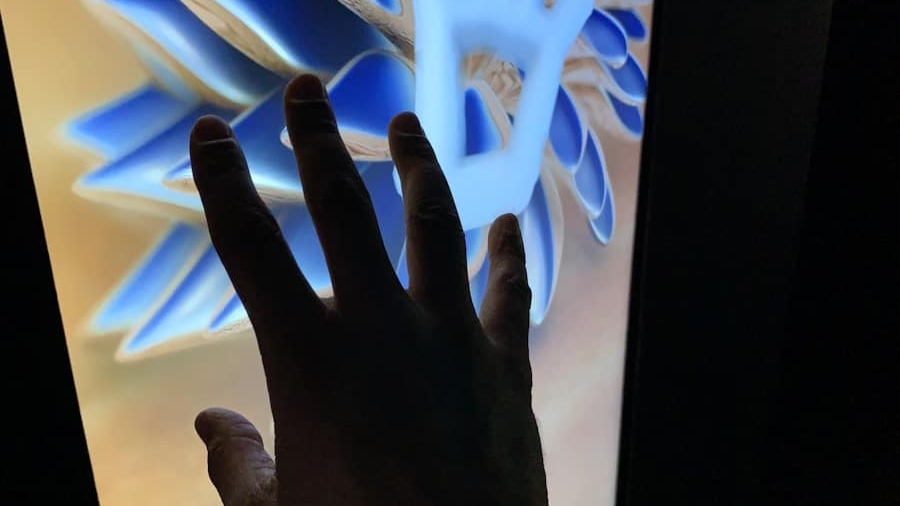Augmented Reality (AR) has emerged as a transformative technology in various sectors, and its application in museum exhibits is particularly noteworthy. By overlaying digital information onto the physical world, AR enhances the visitor experience, making it more engaging and informative. Museums, traditionally seen as repositories of artifacts and historical narratives, are now evolving into dynamic spaces where technology and culture intersect.
This shift is not merely about modernization; it represents a fundamental change in how audiences interact with art, history, and science. The integration of AR allows museums to tell stories in ways that were previously unimaginable, bridging the gap between the past and the present. The potential of AR in museums extends beyond mere visual enhancements.
It offers opportunities for deeper engagement, allowing visitors to explore exhibits at their own pace and according to their interests. For instance, a simple sculpture can be transformed into a multi-layered experience where viewers can access information about the artist, the historical context of the piece, and even interactive elements that allow them to manipulate the artwork digitally. This capability not only enriches the visitor’s understanding but also fosters a sense of connection to the material, making the experience more memorable.
As museums continue to embrace AR technology, they are redefining their roles as educational institutions and cultural hubs.
Key Takeaways
- AR in museum exhibits enhances visitor engagement and interaction with historical artifacts and artworks.
- Interactive AR experiences for visitors allow for a more immersive and personalized exploration of exhibits.
- AR technology can be used for historical reenactments and visualizations, bringing the past to life for museum visitors.
- Augmented art and sculpture exhibits using AR provide new perspectives and dimensions to traditional art forms.
- AR in museum exhibits offers educational and interactive learning opportunities for visitors of all ages.
Interactive AR Experiences for Visitors
Interactive Experiences
One of the most compelling aspects of AR in museum exhibits is its ability to create interactive experiences that captivate visitors. Through the use of smartphones or AR glasses, guests can engage with exhibits in ways that traditional displays cannot offer. For example, at the Smithsonian National Museum of Natural History, visitors can point their devices at dinosaur fossils to see lifelike animations of these creatures in their natural habitats.
Personalized Content
This not only provides a visual spectacle but also educates visitors about the behavior and environment of these ancient animals, making the learning process both fun and informative. Moreover, interactive AR experiences can cater to diverse audiences by offering personalized content. For instance, a family visiting an art museum might have different interests than a group of students on a field trip. AR applications can adapt to these varying needs by providing tailored information based on user preferences or age groups.
Enhanced Engagement
This level of customization enhances engagement and ensures that each visitor leaves with a unique understanding of the exhibits. Additionally, gamification elements can be incorporated into these experiences, encouraging visitors to complete challenges or quizzes related to the exhibits, further deepening their connection to the material.
AR for Historical Reenactments and Visualizations

AR technology has proven particularly effective in bringing history to life through reenactments and visualizations. By overlaying digital reconstructions onto physical spaces, museums can transport visitors back in time, allowing them to witness historical events as if they were actually present. For example, at the American Museum of Natural History, AR applications enable users to visualize significant moments in history, such as the signing of the Declaration of Independence or pivotal battles from the American Civil War.
These immersive experiences provide context and depth that static displays simply cannot achieve. In addition to reenactments, AR can also facilitate visualizations of historical sites that may no longer exist or have undergone significant changes over time. The use of AR allows visitors to see what ancient ruins looked like when they were fully intact or how a city evolved over centuries.
This capability is particularly valuable for archaeological sites where physical remnants may be limited. By providing a digital overlay that reconstructs these sites, museums can offer a richer narrative that connects visitors with the historical significance of these locations.
AR for Augmented Art and Sculpture Exhibits
The integration of AR into art and sculpture exhibits opens up new avenues for artistic expression and viewer interaction. Artists are increasingly using AR as a medium to enhance their work, creating pieces that come alive through digital overlays. For instance, an artist might create a sculpture that appears static but reveals hidden layers or animations when viewed through an AR application.
This not only adds depth to the artwork but also invites viewers to engage with it in a more profound way. Moreover, AR can facilitate discussions around art by providing contextual information about the artist’s intentions, techniques used, and historical influences. At institutions like the Tate Modern in London, visitors can use AR apps to access multimedia content related to specific artworks, including interviews with artists or curators discussing their creative processes.
This additional layer of information enriches the viewing experience and encourages visitors to think critically about what they are seeing. Furthermore, AR can foster collaboration between artists and technologists, leading to innovative projects that push the boundaries of traditional art forms.
AR for Educational and Interactive Learning
Education is at the heart of many museums’ missions, and AR technology enhances this aspect by providing interactive learning opportunities that engage visitors on multiple levels. Through AR applications, museums can create educational programs that cater to various learning styles—visual, auditory, and kinesthetic—making information accessible to a broader audience. For example, children visiting a science museum might use an AR app to conduct virtual experiments or explore complex scientific concepts through interactive simulations.
In addition to enhancing individual learning experiences, AR can also facilitate collaborative learning among groups. Schools often organize field trips to museums where students can work together on projects or challenges presented through AR applications. This collaborative approach not only fosters teamwork but also encourages critical thinking as students discuss their findings and share insights with one another.
By integrating AR into educational programming, museums are not only enhancing their role as educational institutions but also preparing future generations for a world increasingly influenced by technology.
AR for Virtual Tours and Remote Access

The COVID-19 pandemic accelerated the need for virtual experiences across various sectors, including museums. Augmented Reality has emerged as a powerful tool for creating virtual tours that allow individuals to explore exhibits from anywhere in the world.
For instance, institutions like The Louvre have developed virtual tours that allow users to navigate through galleries while accessing detailed information about each artwork. These virtual tours are particularly beneficial for individuals who may have difficulty visiting museums due to geographical constraints or mobility issues. By leveraging AR technology, museums can reach a global audience and provide access to their collections in innovative ways.
Additionally, virtual tours can be enhanced with interactive elements such as quizzes or guided narratives that engage users more deeply than traditional online viewing experiences. This democratization of access not only broadens the reach of museums but also fosters a greater appreciation for art and culture worldwide.
AR for Multi-Sensory Experiences
The future of museum exhibits lies in creating multi-sensory experiences that engage visitors on various levels—sight, sound, touch, and even smell. Augmented Reality plays a crucial role in this evolution by enabling museums to incorporate sensory elements into their exhibits. For example, an exhibit on ancient Egypt might use AR to simulate the sounds of bustling marketplaces or the scent of spices that would have been present during that era.
This immersive approach allows visitors to experience history in a more holistic manner. Furthermore, multi-sensory experiences can enhance emotional connections with exhibits. When visitors are able to see, hear, and even smell elements related to an exhibit, they are more likely to form lasting memories associated with their visit.
Museums like The Exploratorium in San Francisco have embraced this concept by creating interactive installations that invite visitors to engage with science through touch and sound while using AR technology to provide additional context and information. By appealing to multiple senses, museums can create unforgettable experiences that resonate with visitors long after they leave.
Future Trends and Innovations in AR for Museum Exhibits
As technology continues to advance at an unprecedented pace, the future of Augmented Reality in museum exhibits holds exciting possibilities. One emerging trend is the integration of Artificial Intelligence (AI) with AR applications to create even more personalized experiences for visitors. AI algorithms could analyze user behavior and preferences in real-time, tailoring content dynamically based on individual interests or previous interactions within the museum space.
Another promising innovation is the development of wearable AR devices that could enhance visitor experiences without requiring smartphones or tablets. These devices could provide hands-free access to information while allowing users to interact seamlessly with their surroundings. Imagine walking through an exhibit while receiving contextual information directly through smart glasses or contact lenses—this level of immersion could revolutionize how we experience art and history.
Additionally, collaborations between museums and tech companies are likely to yield groundbreaking projects that push the boundaries of what is possible with AR technology. As more institutions recognize the value of integrating digital experiences into their offerings, we can expect an influx of creative solutions designed to engage audiences in new ways. The future of museum exhibits is poised for transformation as Augmented Reality continues to evolve and redefine our relationship with culture and history.
A related article discussing the best Apple laptops for 2023 could provide insight into the technology being used to power AR experiences in museum exhibits. By utilizing high-performance laptops, museums can ensure a seamless and engaging AR experience for visitors.

